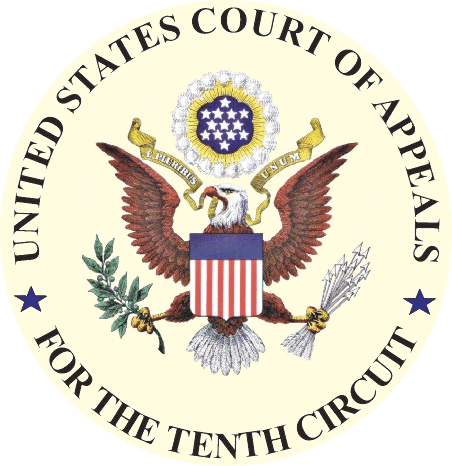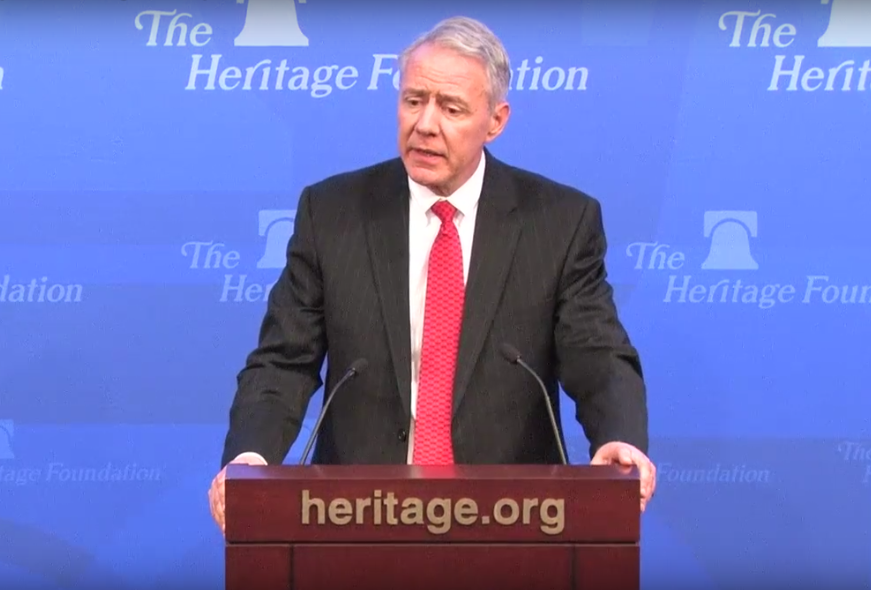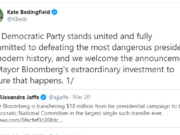Can the government control a private organization’s identity, leaders, and message? In a decision threatening all three of these First Amendment liberties, a divided panel of the United States Court of Appeals for the Tenth Circuit held that the state of Utah can control the procedures an organization uses to choose its leaders.
In 2013, a group of Democrats and Republicans calling themselves Count My Vote were unhappy with the nominees chosen by the Utah Republican Party (“URP”).[1] The URP primarily used a system of caucuses and conventions to choose its nominees, rather than primary elections.[2] Count My Vote believed that the caucus/convention process led to “extremism,”[3] so it told the URP to increase the role of the primary in choosing its representatives.[4] If the URP refused to do so voluntarily, Count My Vote threatened to compel the party by pursuing changes in state law.[5]
The URP refused to change the procedures and bylaws its members had chosen and long sustained. So Count My Vote urged the state to “giv[e] all Utah voters a voice in choosing candidates,” that is, in who would represent the URP.[6] And the State Legislature agreed, passing Senate Bill 54, which required that any party wishing to appear on the ballot accept a new primary election process.[7]
But the URP’s self-chosen procedures were part of its identity. As with a New England town council or a Quaker meeting run by consensus, those procedures defined its character and how it wanted to find its place in the world.[8] And those procedures affected the type of people who would become party leaders. Party leaders, in turn, influenced the party’s message and goals.[9] Thus, Utah’s law violates an organization’s freedom of association in multiple ways. It was not, as a divided Tenth Circuit panel concluded, only about “who the deciders are.”[10]
Even if it were, a law controlling how an organization chooses its leaders still threatens freedom of association, and not just for political parties. It is a threat to any group that wants to maintain its character by creating rules to control who will lead and represent it. Political parties are often the first and best examples of private associations, and what happens to them will affect all others. Thus, courts have applied the rules for political parties to all kinds of associations.[11]
For example, in Boy Scouts of America v. Dale,[12] the Supreme Court addressed whether an organization like the Boy Scouts could exclude individuals whose conduct contradicted the organization’s ideals. In doing so, the Court relied on a political party case, Democratic Party of United States v. Wisconsin,[13] where it had analyzed the extent to which a national party could control – contrary to state law – those attending its national convention.[14]
And, grouping all the political party and association cases together, the Supreme Court in Hosanna-Tabor Evangelical Lutheran Church & Sch. v. EEOC[15] held that such “expressive-association” cases were “useful in pointing out” the essential rights regarding membership and employment in religious organizations.[16] Thus, in letting the government control the internal processes and selection procedures of political parties, the Tenth Circuit has threatened religious groups and all other types of associations.
On April 25, 2018, the Institute for Free Speech filed an amicus brief on behalf of the Utah Republican Party, asking the Tenth Circuit to reconsider its decision. First, IFS argued that the Tenth Circuit was wrong when it said that the law did not burden “the associational rights of the party.”[17] According to the court, all the law did was turn the nomination process over to the true party, to all the registered Republicans voting in the primary.
But this means that the government can control an association any way it wants – it need only convince a court that some subgroup is the true association and that the subgroup would vote the government’s way. In case after case, courts would allow the government to broadly intrude into an association’s governing processes. And the strict scrutiny of laws heavily burdening freedom of association would disappear, because no law would ever heavily burden an association.
But the Tenth Circuit also overlooked the nature and purposes of organizational governance. The problem of group decision-making is that, even if each member has a clear preference, it may be impossible to create a group preference by adding up all the individual preferences.[18] To solve this problem – to create a stable, unique identity, with messages and goals, out of members’ shifting thoughts – a group may impose internal rules and processes.[19]
Thus, a particular governance procedure may be the only way to create an identity and message where otherwise none would exist. That is, a group preference may not exist outside the governance procedures it has adopted. And when a court ignores those processes to divine the group’s preferences on its own, the court not only destroys the only group preferences that truly exist, it also pretends that the preferences it made up, in fact, belong to the group.
And, even if it were possible to divine a group’s preferences through an imagined referendum, the Tenth Circuit panel ignores that a group may have a distrust of pure democracy, and chosen as part of its identity and purposes to use intervening institutions to “refine” the views of the majority.[20] Indeed, the Tenth Circuit panel need look no further than the very Constitution from which it derives its power and authority to see the use of such institutions.[21] By simply assuming that an expressive association’s governance structure fails to serve its members’ interests, the Tenth Circuit has undermined a group’s associative liberty to avoid what the group may regard as a mob of individual preferences.
Finally, the Institute argued that the Tenth Circuit’s decision endangers a group’s right to communicate its own message, apart from the preferences of its members. That is, organizations enjoy expressive association rights distinct from those of its individual members. And one way of expressing itself is through the rules that govern the association. If individual members dislike the message, they may exercise their freedom of association by leaving the group. But a court violates the group’s associational rights if it decides that it will compel a new message, one contrary to the rules and procedures all its members agreed to. Rather, to give effect to the group’s associational rights and expressive freedoms, a court should look to the group’s governing documents to discern its message or how that message is to be determined. The Tenth Circuit failed to do so in this case.
If associational freedom is to retain any meaning, the Tenth Circuit should reconsider its decision.
https://www.ifs.org/wp-content/uploads/2018/04/Utah-Republican-Part-v-Cox.pdf
[1] Utah Republican Party v. Cox, 885 F.3d 1219, 1247-48 (10th Cir. 2018).
[2] At the neighborhood caucuses, voters are expected to deliberate and choose delegates to the state convention. They are urged to select delegates who will fully investigate the candidates seeking nomination and vote for those who will both represent their neighborhood’s values and have the best chance of winning the general election. The Party “uses the primary election mechanism only when the convention delegates could not come to a consensus—when no candidate for a given office could obtain sixty percent of the delegates eligible to vote for that candidate.” Id. at 1247. The top two candidates would then compete for the nomination in a primary election. While Utah law allows parties to restrict primary and caucus voting to registered party members, attending party caucuses and then conventions imposes higher costs on potential voters, affecting those willing to participate.
[3] Id. at 1248.
[4] They asked “the party to accept absentee votes at conventions and increase the number of votes required for candidates to secure the nomination at a convention,” thus requiring the nominee be chosen more often in the primary election. Id.
[5] Id.
[6] Count My Vote, Citizens’ Initiative Petition 4-5 (2013), http://www.countmyvoteutah.org/s/Submitted-Initiative-Applicationduv3.pdf.
[7] Under Senate Bill 54, a party could not participate in the general election – could not have its name attached to candidates on the general election ballot – unless it agreed to follow the new primary election process. Utah Republican Party, 885 F.3d at 1249. Under the new procedure, the caucus/convention process became merely one of two ways for a candidate to appear on the primary ballot. To use caucuses and conventions, parties had to allow delegate voting by absentee ballot at the convention. Id. at 1248. The nominees chosen by the delegates would then appear on the primary ballot. But, anyone else who obtained a designated number of petition signatures would also appear on the ballot. Id. at 1249.
Another provision of Senate Bill 54, since invalidated, required parties to include the votes of unaffiliated voters in choosing the party’s representatives. Id. at 1225. And the party had to accept that primary winner as the party’s representative at the general election, regardless of the vote at the nominating convention, or lose its ability to list affiliation on the general election ballot. Id. at 1249.
[8] See, e.g., Eden Grace, How Quakers Make Decisions (It’s Not Just Consensus!), QuakerSpeak, June 5, 2014, http://quakerspeak.com/quaker-decision-making-consensus/.
[9] For example, while the caucus/convention system deliberately fosters deliberation, including strategic deliberation as to who has the greatest chance to win in the general election, it also rewards those who are faithful to the party’s platform and core ideals.
[10] Utah Republican Party, 885 F.3d at 1232.
[11] Regarding different media for expression, however, the courts have been less willing to cross-pollinate, insisting that different laws must apply to different media. See Metromedia, Inc. v. City of San Diego, 453 U.S. 490, 501, 501 n.8 (1981) (noting that “[e]ach method of communicating ideas is ‘a law unto itself,’” and that “[e]ach medium of expression . . . must be assessed for First Amendment purposes by standards suited to it, for each may present its own problems” (internal quotation marks omitted) (ellipsis in original)).
[12] 530 U.S. 640 (2000).
[13] 450 U.S. 107, 124 (1981).
[14] See Boy Scouts of America, 530 U.S. at 651.
[15] 565 U.S. 171 (2012).
[16] Id. at 200.
[17] Utah Republican Party, 885 F.3d at 1233 (emphasis in original).
[18] For example, discussions of Condorcet’s paradox and majority cycling show that with three or more voters and three or more options, a pairwise comparison of all the options may cycle endlessly, with no choice made. See Section 3.1, “Condorcet’s Paradox,” in Eric Pacuit, Voting Methods, in The Stanford Encyclopedia of Philosophy (Edward N. Zalta ed., Fall 2017 ed.), https://plato.stanford.edu/archives/fall2017/entries/voting-methods/.
[19] To reduce this instability, groups may create structure-induced equilibria using institutions that order or control decision-making. See, e.g., John Aldrich, Why Parties?: The Origin and Transformation of Political Parties in America 37-41, 201-202 (1995). Institutional arrangements like the use of committees, jurisdictions, amendment rules, bicameralism, veto power in the executive, and even political parties can foster structure-induced equilibria. Id. at 202.
[20] The Federalist No. 10 (James Madison) (“The effect of the first difference [between pure democracies and republics] is, on the one hand, to refine and enlarge the public views, by passing them through the medium of a chosen body of citizens, whose wisdom may best discern the true interest of their country, and whose patriotism and love of justice will be least likely to sacrifice it to temporary or partial considerations.”).
[21] For example, one may look to the Electoral College, the original method for selecting Senators, or even the very existence of a Congress rather than direct democracy.














